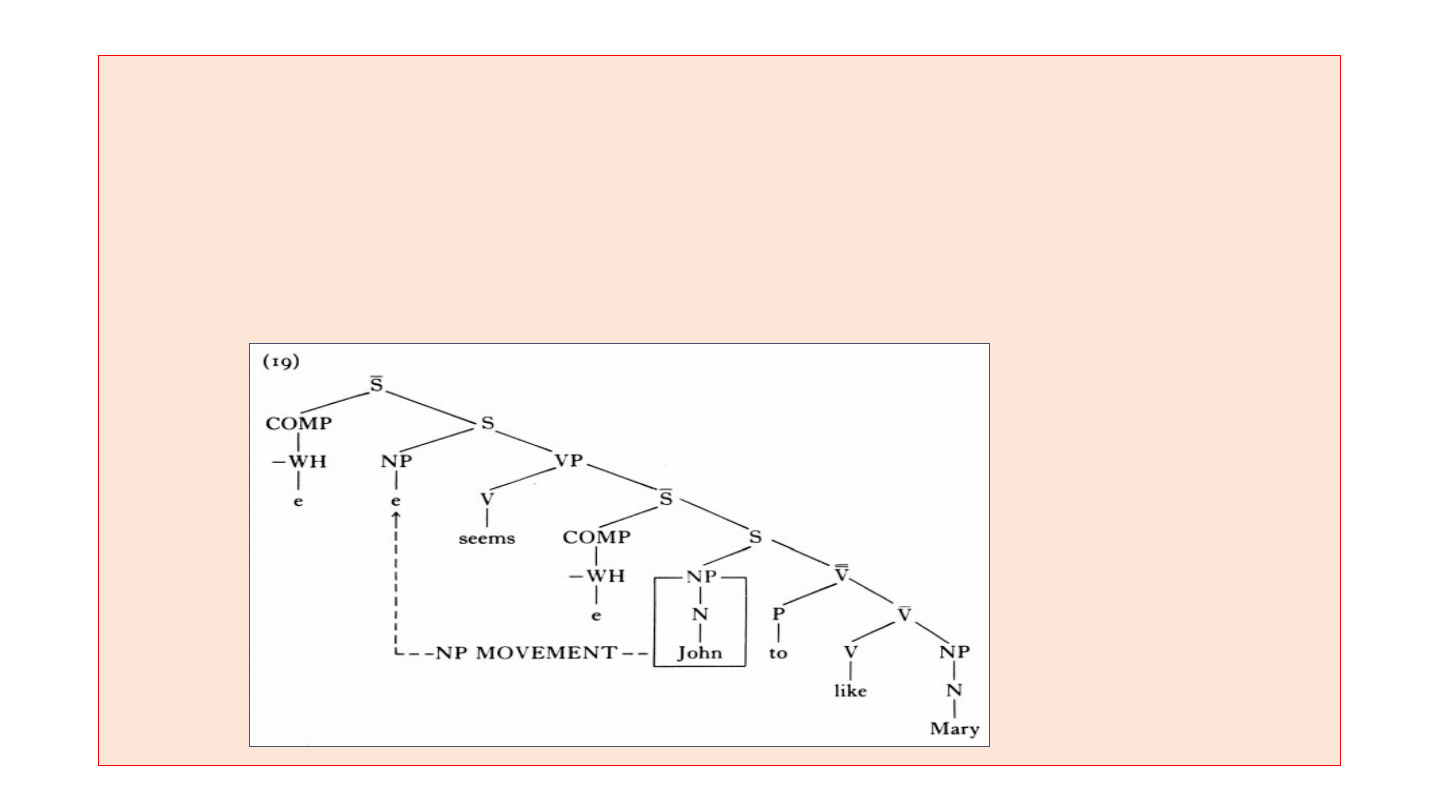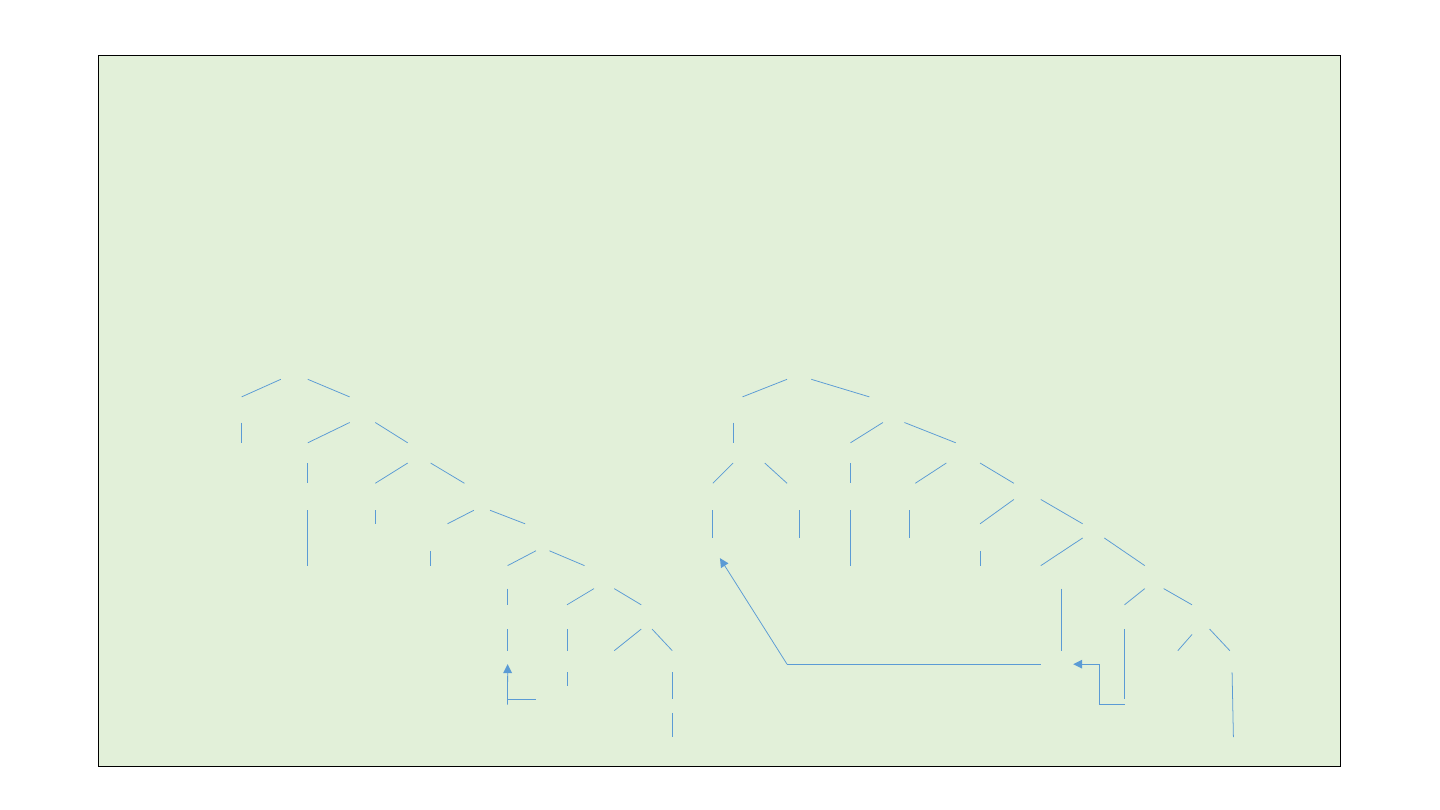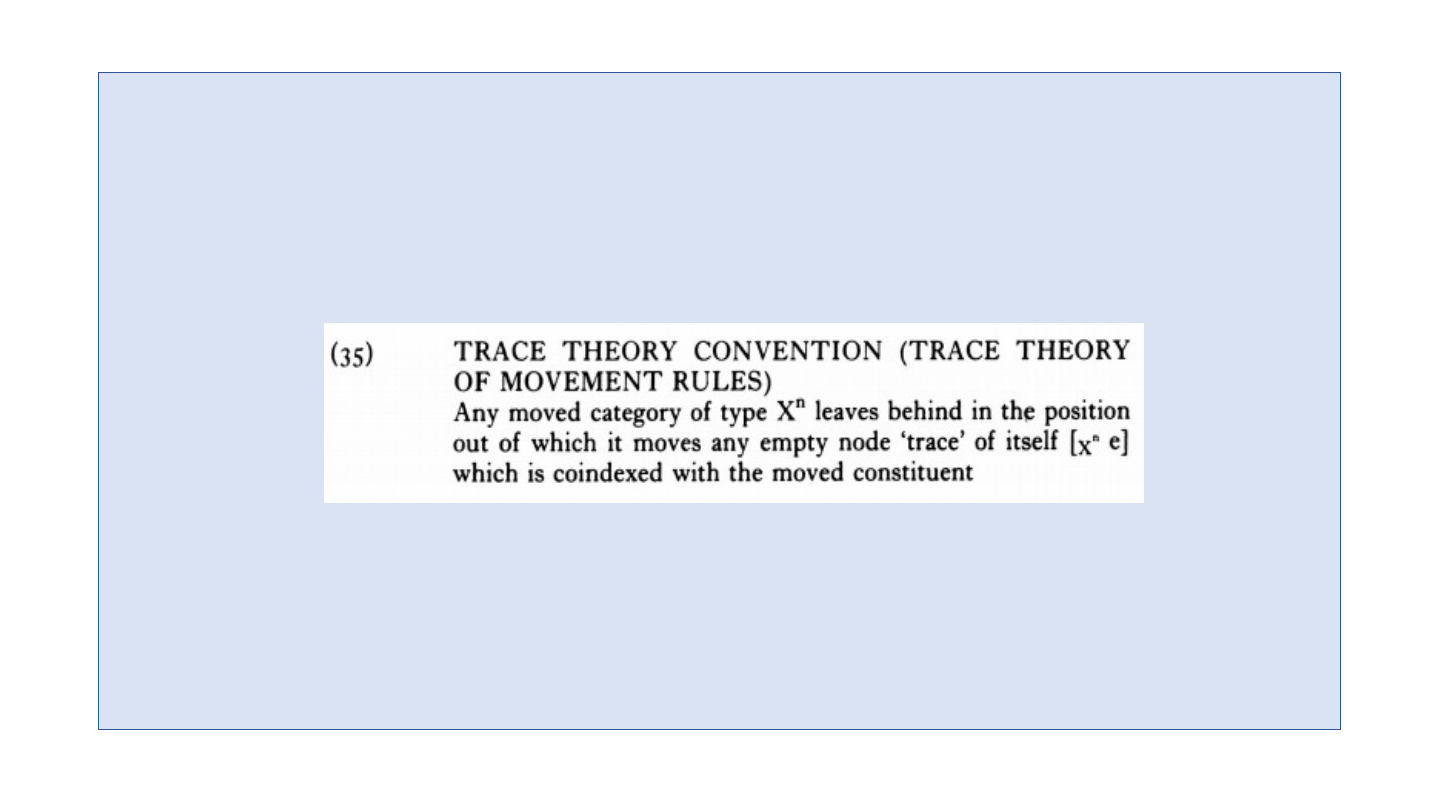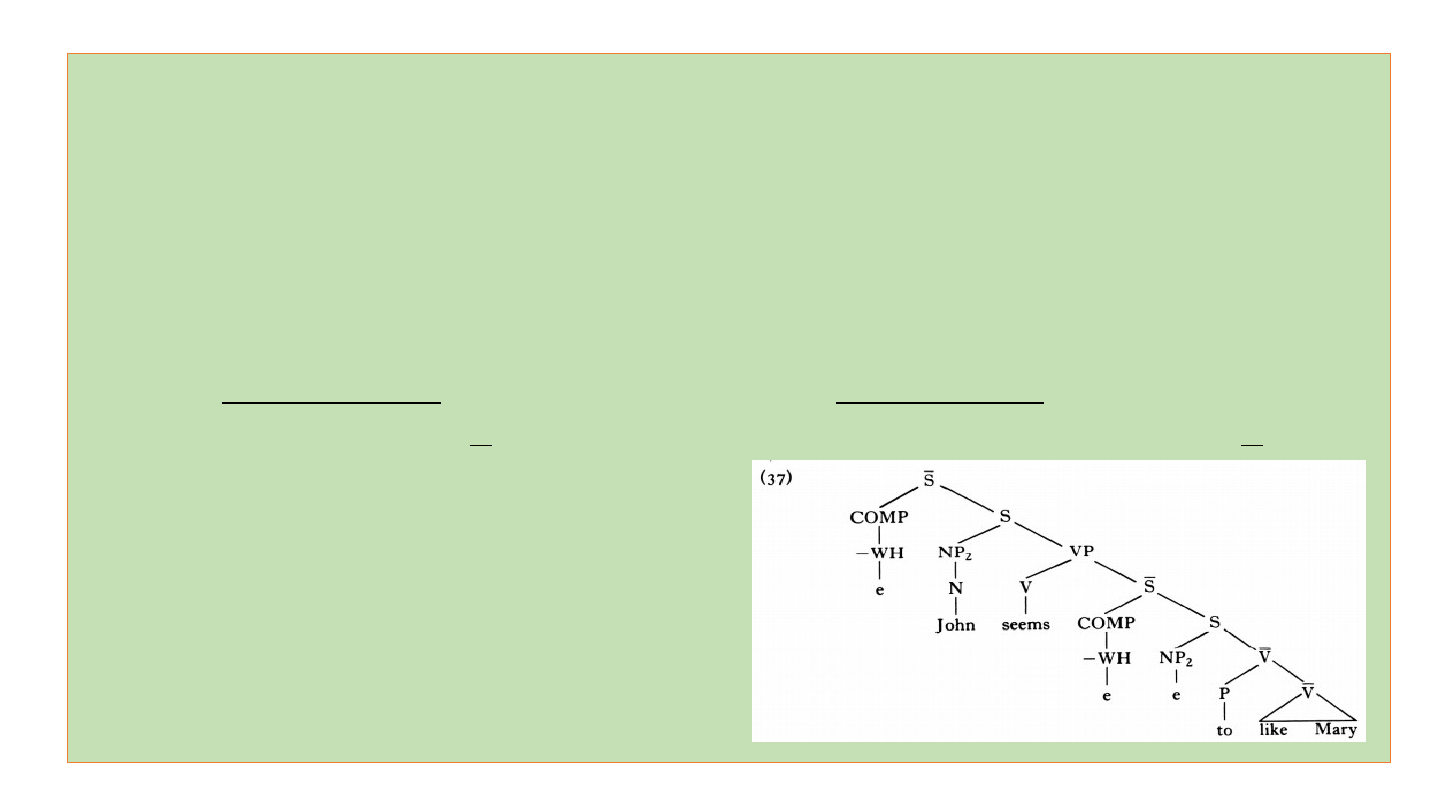
5. How does NP-Movement with predicates like ‘seem’ occur?
The operation of NP-Movement in the seem-sentence (18) can be schematized by
the tree diagram of (19), which is the underlying structure. The subordinate subject
NP ‘John’ moves into the empty NP-position in the main clause(seem-clause):
(18) John seems to like Mary ( ← surface structure)
( ← underlying structure)
(20) NP-Movement
Move an NP into
an
empty NP-position

▶ The empty NP-position of ‘seems’ in (19) is underlying empty, and the NP con-
cerned
is filled by the lexical expression ‘John’. But here, the important thing is that the NP
‘John’ must have a case in any syntactic structures. In the underlying structure (19), if
the NP ‘John’ is not moved into the subject position in seems-clause, the ‘John’ has no
case and any interpretation as well, accordingly, being ungrammatical.
▶ Because the subordinate clause(like-clause) is untensed, the verb ‘like’ cannot assign
a nominative case to the NP ‘John’. So the ‘John’ needs to move into the empty NP-
position in the main tensed clause(seems-clause), which is eligible to give a case to
the subject NP. Therefore, the NP-Movement of ‘John’ is required obligatorily.
▶ Every NP can be interpreted in a sentence as long as having a appropriate
case.
In any syntactic structures, the cases of NPs must be satisfied for the interpretation
of NP. Accordingly, the property of the semantic interpretation is significantly related
to syntactic structures.

♣ In NP-Movement, lexical item NPs cannot move to the filled NP-positon by any
other lexical item. Suppose that the most likely candidate to fill the NP is it.
If so, the ‘John’ should not move into the filled NP-positon.
(21) It seems that John likes Mary
To be more precise, in (21), ‘John’ in subordinate tensed clause have a nominative case,
and so
the ‘John’ is not needed to be moved to the main clause. Of course, since the subject
positon in the main clause is filled by ‘it’, the movement of ‘John’ to that position is
banned.
This account is supported by the constraint (23) for NP-Movement:
(23) No rule in any natural language can replace a constituent containing
lexical material by any other constituent
So, the sentence (21) that has no NP-movement is grammatically well-formed.

6. Adjunction vs. Substitution
WH-Movement is an adjunction rule whereby one constituent is adjoined
to COMP;
by contrast, NP-Movement is a substitution rule whereby one constituent is
substituted
for an empty NP category.
An empty node constituent can be replaced by another same kind of constituent.
So a grammar of English must provide a principled account of why the NP moves into
an empty NP-position – the moved NP comes to occupy an empty NP-node –
as constrained with the substitution rule (24):
(24) Structure-Preserving Constraint
A constituent can only be moved by a substitution rule into another
category of the same type.

7. Trace Theory Convention
Movement rules leave behind a coindexed empty node trace of themselves; this is
known as Trace Theory. The wanna-contraction might be well explained by Trace Theory.
(29) You might want who to win? (underlying structure)
(30) Who might you want to win? (surface structure)
(31) *Who might you wanna win? (wanna-contraction in surface structure)
(29) S’ (30) S’
COMP S COMP S
[+WH] NP VP [+WH] NP VP
N AUX V’ NP COMP N AUX V’
might V S’ who1 e might V S’
you want COMP S you want COMP S
[+WH] NP VP [+WH] NP VP
who N to V’ t1 N to V’
(who) V Wh-Movement (t1) V
win win

The NP ‘who’ originates in the position of the subject in the win-clause, and moves
to the COMP by the adjunction rule as a wh-word in the same clause. And then the
‘who’ is adjoined to the higher COMP again, when the trace(t) leaves behind in the empty
node NP by the movement of NP. This assumption can be conditioned by Trace
Theory Convention (35):
In (30), the trace(t1) is coindexed with the moved ‘who1’, showing the preservation of
the same category as a coreferential NP. The coindexed t1 cannot be ignored since it is
an exact NP category. Therefore, wanna-contraction is not possible in (30). The
Trace
Theory Convention is effective for the account of wanna-contractions.

8. All Movement Rules leave behind a Trace
All movement rules including both NP-Movement and WH-Movement leave behind
a coindexed empty category (=trace) when they move a constituent. For an indirect
question, the surface structure of a sentence (38) would be represented in detail as in (39),
with a trace(t) of ‘what’. The wh-word ‘what’ leaves behind a coindexed empty category.
The empty category [NP2 e] means a trace (t).
WH-Movement NP-Movement
(38) I wonder what he did (37) [NP2 John] seems [NP2 e] to like Mary
(39) I wonder [NP2 what] he did [NP2 e]
(37) shows that the NP-Movement of ‘John’ leaves
behind a coindexed empty category [NP2 e] (=trace).
(The coindexed category has the same interpretation)